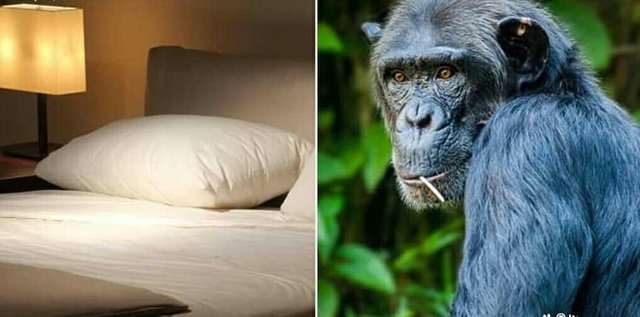Mengungkap tentang tempat tidur kita

Ternyata, triliunan mikroba bersembunyi di atas tempat tidur, bahkan saking banyaknya, jumlah mikroba yang ada di atas tempat tidur manusia lebih banyak daripada mikroba yang ada di sarang simpanse.
"Kami ingin tahu bagaimana tempat tidur manusia bila dibandingkan dengan simpanse, sebagai kerabat evolusi terdekat manusia," kata Thoemmes, dilansir Live Science. Simpanse menghabiskan setengah dari masa hidupnya di dalam sarang. Mereka membangun sarang di atas pepohonan dengan menggunakan cabang pohon yang kuat dan kokoh, kemudian mereka membuat ‘kasur’ dari dedaunan.
Simpanse berada di dalam sarang selama delapan hingga sembilan jam per harinya. Penelitan ini dipublikasikan di Royal Society Open Science.
Tapi, selain berfungsi sebagai tempat tidur, sarang simpanse juga juga berguna untuk melindungi mereka dari angin, hujan, dan predator.
Peneliti kemudian memeriksa mikroba yang ada di dalam sarang simpanse dengan mengambil sampel dari 41 sarang di Issa Valley, Tanzania. Hasilnya, ditemukan jejak artopoda, serangga, dan laba-laba di sarang mereka.
Lalu bagaimana dengan manusia?
Di atas tempat tidur manusia, ditemukan bakteri yang muncul dari sisa-sisa kulit mati, dari mulut, dan yang paling menjijikkan adalah sisa-sisa kotoran. Bahkan sisa kotoran tidak ditemukan pada sarang simpanse.
Para peneliti menduga, karena manusia tidur di ruangan tertutup, maka mikroba dari alam tidak bisa masuk dan mengotori tempat tidur manusia, sehingga kebanyakan mikroba yang ada di tempat tidur adalah hasil produksi dari tubuh kita sendiri.
Uncover about our bed

Apparently, trillions of microbes hide in bed, even so much, the number of microbes that exist in the human bed more than microbes in the nest of chimpanzees.
"We want to know how the human bed when compared with chimps, as the closest evolutionary relatives of humans," said Thoemmes, told Live Science. The chimpanzee spent half of his life in the nest. They build a nest above the trees by using strong and sturdy tree branches, then they make a 'mattress' from the leaves.
Chimps are in the nest for eight to nine hours per day. The research is published in the Royal Society of Open Science.
But, in addition to functioning as a bed, chimpanzee nests are also useful to protect them from wind, rain, and predators.
The researchers then examined the microbes present in the chimpanzee nest by taking samples from 41 nests in Issa Valley, Tanzania. The result, found traces of artopoda, insects, and spiders in their nests.
Then what about humans?
Above the human bed, found a bacteria that emerges from the remains of dead skin, from the mouth, and the most disgusting is the remnants of the dirt. Even the rest of the dirt is not found in the nests of chimpanzees.
The researchers suspect, because humans sleep in a closed room, the microbes from nature can not enter and pollute the human bed, so most of the microbes in bed are the products of our own bodies.
Thanks
i think it was a great blog . carry on, best of luck!
Downvoting a post can decrease pending rewards and make it less visible. Common reasons:
Submit